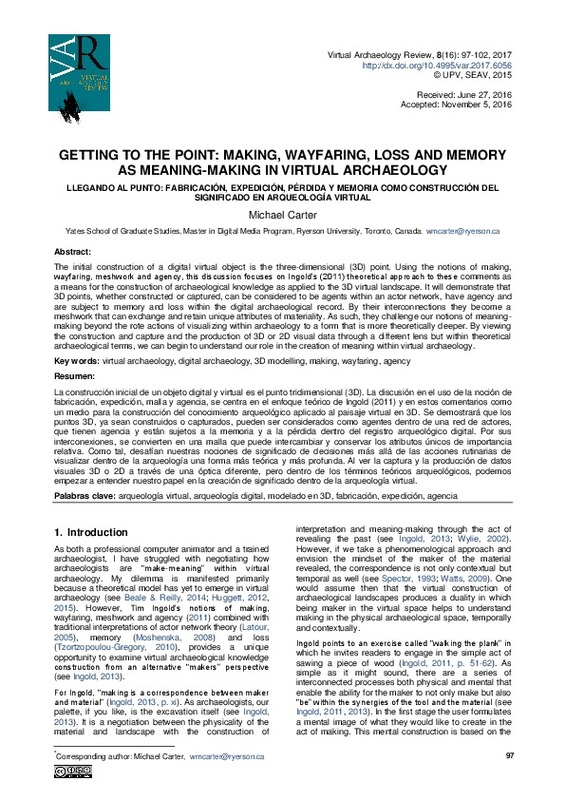JavaScript is disabled for your browser. Some features of this site may not work without it.
Buscar en RiuNet
Listar
Mi cuenta
Estadísticas
Ayuda RiuNet
Admin. UPV
Getting to the point: making, wayfaring, loss and memory as meaning-making in virtual archaeology
Mostrar el registro completo del ítem
Carter, WM. (2017). Getting to the point: making, wayfaring, loss and memory as meaning-making in virtual archaeology. Virtual Archaeology Review. 8(16):97-102. https://doi.org/10.4995/var.2017.6056
Por favor, use este identificador para citar o enlazar este ítem: http://hdl.handle.net/10251/82756
Ficheros en el ítem
Metadatos del ítem
| Título: | Getting to the point: making, wayfaring, loss and memory as meaning-making in virtual archaeology | |
| Otro titulo: |
|
|
| Autor: | Carter, William Michael | |
| Fecha difusión: |
|
|
| Resumen: |
[EN] The initial construction of a digital virtual object is the three-dimensional (3D)point. Using the notions of making, wayfaring, meshwork and agency, this discussion focuses on Ingold’s (2011) theoretical approach to ...[+]
[ES] La construcción inicial de un objeto digital y virtual es el puntotridimensional (3D). La discusión en eluso de la noción de fabricación, expedición, malla y agencia, se centra en elenfoque teórico de Ingold (2011)y ...[+]
|
|
| Palabras clave: |
|
|
| Derechos de uso: | Reconocimiento - No comercial - Sin obra derivada (by-nc-nd) | |
| Fuente: |
|
|
| DOI: |
|
|
| Editorial: |
|
|
| Versión del editor: | https://doi.org/10.4995/var.2017.6056 | |
| Agradecimientos: |
I would like to thank my peer reviewers, the VAR editorial staff, as well as Paul Reilly, Costis Dallas and Neal Ferris for their editorial guidance. This research is partially funded by Sustainable Archaeology, Museum of ...[+]
|
|
| Tipo: |
|








